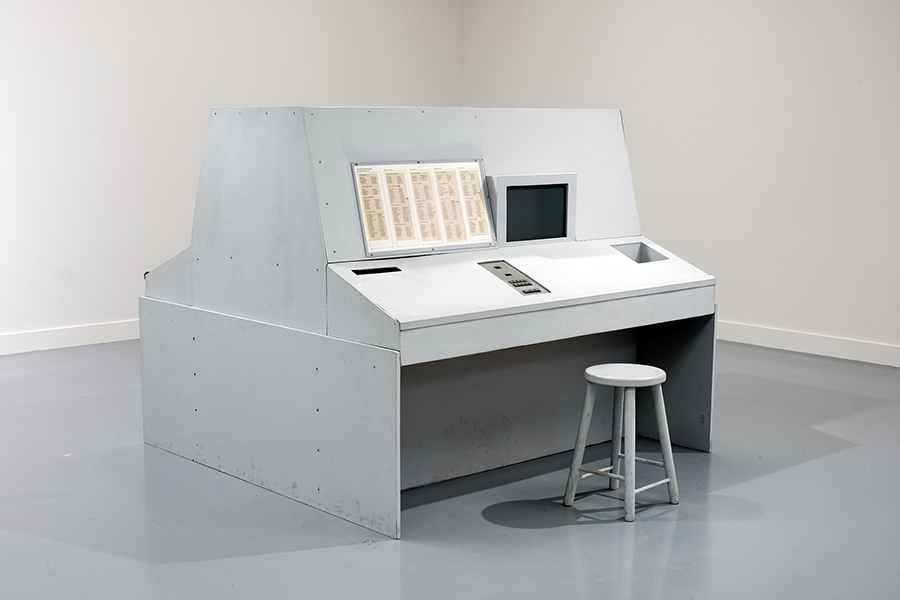Stephen Willats and the Dead Ends of Conceptual Counterculture
The artist’s extensive retrospective at the Migros Museum, Zurich, shows that the social diversity Willats portrays does not translate into an aesthetic diversity
The artist’s extensive retrospective at the Migros Museum, Zurich, shows that the social diversity Willats portrays does not translate into an aesthetic diversity

Since the 1960s, British artist Stephen Willats has combined a cybernetics-inflected conceptualism with sociology to address problems of social organization. His approach applies formalist and technical aesthetics to non-formalist, non-technical cultural criticism. The alignment of fine arts, semiotics and left-wing criticism that occurred during the 1960s is all-pervasive. Whereas many artists of Willats’s era play only marginal roles in today’s art-making, he has remained a benchmark of socially conscious conceptual art whose work continues to be shown.
The Migros Museum’s current retrospective of Willats’s work, ‘Languages of Dissent’, is one of the largest to date and offers an accessible overview of every major phase in the artist’s career. Curator Heike Munder presents a comprehensive selection of around 150 works, displayed over two floors, ranging from diagrammatic pieces (Drawing for a Project No. 9, 1965) via experiments with kinetic sculptures (Visual Transmitter No. 2, 1968) through to collaborative works (The West London Social Resource Project, 1972–73) and recent drawings (Cybernetic Still Life No. 3, 2009/19).

Since the 1970s, one of Willats’s key areas of investigation has been the impact on people of precarious living conditions. Having conducted interviews with residents of social housing blocks in London and Berlin, among other cities, he created multimedia assemblages (for instance, Taboo Housing Estate, 1982) that included statements from, and objects chosen by, his respondents. Given the nature of the source material, you might expect these projects to result in a body of highly diverse work. Yet, Willats’s conceptual anti-aesthetics – a successor to Marcel Duchamp’s ‘antiretinal’ dadaism – has evolved into a signature style with recurring motifs and formats: grid structures, arrows, diagrams, documentary texts, instructions; somewhat clumsily executed assemblages and collages; machines seemingly taken from sci-fi film sets (Meta Filter, 1975). Willats’s work has become so easily identifiable, in fact, that those to whom he tries to give a voice are, ultimately, somewhat drowned out by his own voice. The rigour of modern social organization that he sought to criticize has become the determining factor of his art; what once was conceptual counterculture is now self-referential.

Although Willats works across multiple media, his early cybernetics aesthetic has evolved only minimally. Even his more recent works on paper frequently resemble the 1960s diagrammatic renderings of cybernetics guru Stafford Beer. This kind of dedication to a distinct aesthetic is not necessarily a flaw: on the contrary, it could be seen as an antidote to the neoliberal mythology of constant re-invention. However, given Willats’s focus on social interaction, it is hard not to feel that greater aesthetic diversity would enhance the credibility of his artworks as acts of genuine public engagement. More precisely speaking, it is strange that the given social diversity does not translate into an aesthetic diversity which runs counter to the brand-like quality of Willats’s works. In a 2018 interview with Galerie Thomas Schulte, Willats complained that the ‘language of objects’ in 20th-century design was ‘almost a denial of the complexity of social life’; he also criticized the treatment of people as objects and spoke in favour of ‘complex networks’ and ‘more variety’. Yet, the works in ‘Languages of Dissent’ would appear to attest that his own visual language is ‘almost a denial’ of complexity and variety. Willats, it seems, is trapped in a conceptual turn that has long-since fossilized.
Translated by Nicholas Grindell
Stephen Willats, ‘Languages of Dissent’ was on view at Migros Museum, Zurich, from 25 May until 18 August 2019
Main image: Stephen Willats, A to B (detail), 1985, photography, crayons and markers on paper, 1.2 × 1.4 m. Courtesy the artist






















